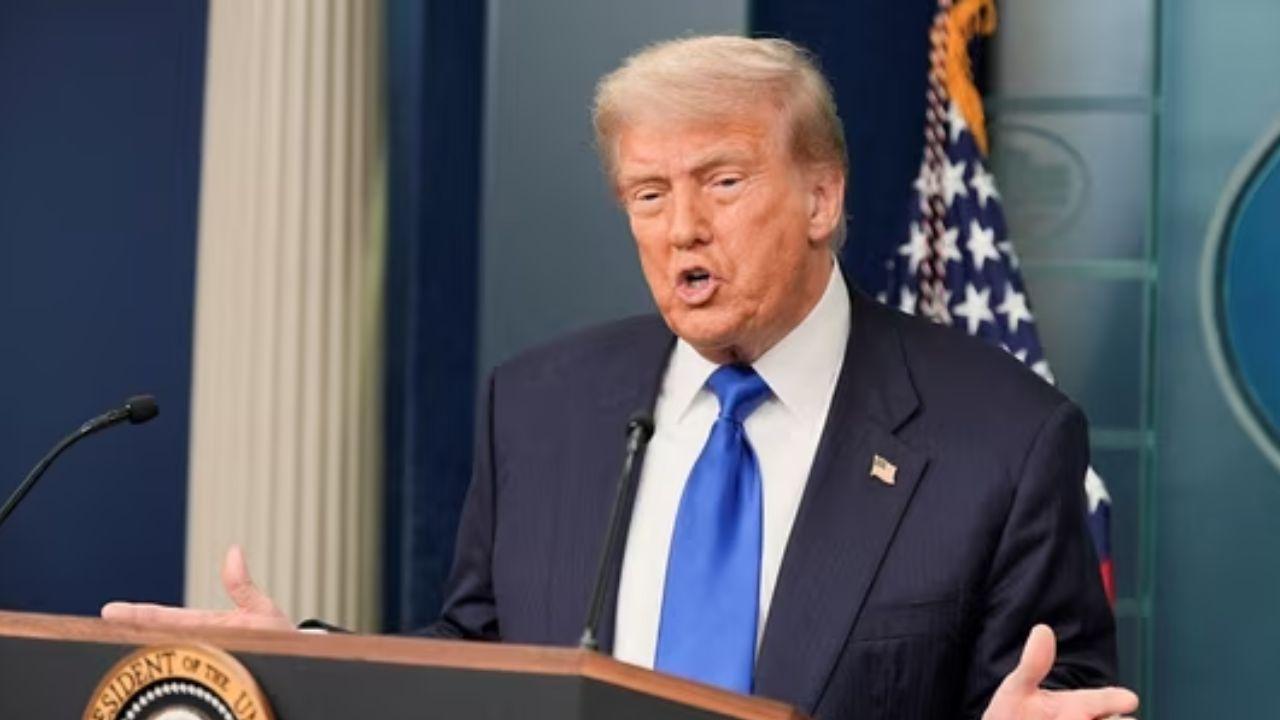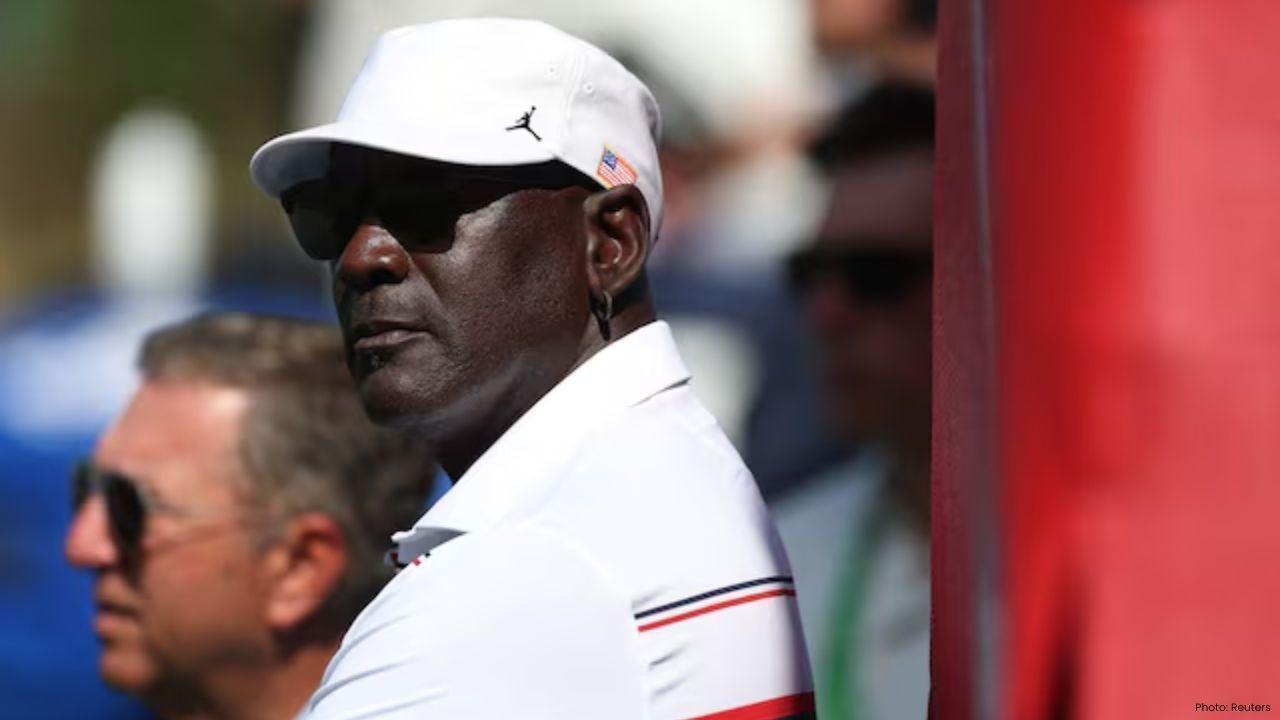
Join 10k+ people to get notified about new posts, news and tips.
Do not worry we don't spam!

Post by : Meena Ariff
Photo: Reuters
During the old Cold War, America and the Soviet Union did not fight each other directly. Instead, they supported other countries to fight on their behalf. Today, something similar is happening between America and China, but this time it is a trade war.
Earlier, America and China were putting new tariffs on each other’s goods, making products more expensive. But after their recent meetings in Geneva and London, both countries stopped adding new tariffs directly. Now, America is trying a new method to reduce China’s power by targeting other countries that trade with China.
America Sends Letters to Asian Countries
On July 7th, President Donald Trump sent important letters to countries like Japan, South Korea, Cambodia, Myanmar, Laos, and others. These letters did two main things:
They changed the deadline for trade talks from July 9th to August 1st.
They warned these countries about new tariffs if trade talks fail.
Here are the new tariff rates they might face:
Japan and South Korea: 25% tariff
Cambodia: 36% tariff
Myanmar and Laos: 40% tariff
These letters also warned that if any goods are “transshipped” from other countries (meaning goods made in China but sent through another country to hide their true origin), they will still face these high tariffs. Even though China’s name was not mentioned, everyone knew these rules were aimed at stopping China from avoiding tariffs.
Warning to BRICS Countries
President Trump also gave a warning to countries supporting the BRICS group. BRICS is a group of countries formed in 2009 and includes Brazil, Russia, India, China, and South Africa. Trump threatened to put an extra 10% tariff on countries supporting BRICS because he believes BRICS is trying to weaken the power of the US dollar in the world.
New Trade Deal with Vietnam
America also made a new deal with Vietnam. According to this deal:
America will put a 20% tariff on most goods coming from Vietnam.
It will put a 40% tariff on goods that are “transshipped” through Vietnam from China.
This means America is making it harder for China to send its products to America by hiding them through Vietnam.
Similar Deal with Britain
Earlier, on May 8th, America made a similar deal with Britain. In this deal, America agreed to treat British aluminium, medicines, and steel more favourably if Britain promised to:
Buy fewer Chinese products.
Allow American officials to check Chinese-owned factories in Britain.
This is a new style of trade deal where America gives benefits to one country if it punishes another country (in this case, China).
China’s Reaction and Warning
China is very angry about these new deals and tariffs. Its Ministry of Commerce said:
China strongly opposes trade deals that hurt its interests.
China will take strong action in return.
Countries should “remain on the right side of history” and not go against China.
America’s Fear of Transshipment
America is worried that China might try to escape tariffs by sending its products first to countries like Vietnam, Thailand, or Mexico. These countries will then sell those goods to America as if they were their products.
For example:
Cambodia sold $26 million more sweaters to America in April and May. During the same time, Cambodia imported double that amount of sweaters from China.
Thailand sold $42 million more car parts to America while buying $114 million more from China.
What is Trade Diversion?
Sometimes, this is called “trade diversion”. It happens when high tariffs make Chinese products too expensive for America, so other countries like Thailand or Vietnam sell their products to America instead. Chinese companies then sell their products to these countries to fill the gap.
But not all such trade is legal or fair. Some countries might just relabel Chinese goods as their own without changing anything.
Rules for ‘Made in’ Labels
Right now, a product is not considered Chinese if it is substantially changed in another country. For example:
Chinese flour baked into cake becomes the other country’s product.
Chinese fabric cut and stitched into shirts becomes the other country’s product.
Chinese machine parts put together into a final machine can become the other country’s product if the assembly work is meaningful and complex.
For example, America’s border authorities once allowed a piece of exercise equipment to be labelled as non-Chinese because its parts had to be welded, degreased, coated, and assembled in 255 steps.
Possible New Rules Under Trump
President Trump might change these rules. He wants to use a percentage rule instead. For example:
If a product has too much Chinese material in it, even if it is assembled in Vietnam, it will still get a 40% tariff.
This is worrying for Vietnam because its factories depend a lot on Chinese parts. In 2017, Chinese parts made up 6% of the value of Vietnam’s exports to America. By 2022, this increased to 16%.
The Problem of Relabelling Goods
Some companies simply put a “Made in Vietnam” label on Chinese products without changing them. This is called the “China wash”. Trump’s advisor Peter Navarro said it happens a lot, but experts say it is less than 8% of Vietnam’s exports to America.
Relabelling is already illegal. In one case, a couple in Florida went to jail for over four years because they brought Chinese plywood into America with false labels saying it was from Malaysia or Sri Lanka. They even had to pay the government for storing the wood until the case ended.
America’s Crackdown on Customs Fraud
During recent talks, Vietnam promised America it would take action against illegal relabelling. America is also taking strong steps. In May, its justice department listed “trade and customs fraud, including tariff evasion” as its second-highest priority for white-collar crime.
Experts Suggest a Fair Solution
Some experts say the best way to stop countries from mislabelling products is to charge the same tariff for all countries. If tariffs are equal, no one will have a reason to lie about where their products come from. This system is called “most favoured nation” treatment.
This is the current situation in the trade war between America, China, and other countries. America wants to reduce China’s power in world trade, and China is planning how to respond to protect its interests.










Maxey, Antetokounmpo Shine as Sixers and Bucks Secure Wins
Tyrese Maxey led the Sixers’ comeback win over the Wizards, while Giannis powered the Bucks and the

Warriors Defeat Clippers as Jimmy Butler Scores 21 Points
Jimmy Butler scored 21 points as the Warriors beat the Clippers 98-79, ending LA’s win streak. Harde

Michael Jordan Criticizes NBA Players for Load Management
Michael Jordan says NBA players should not rest without reason, stressing commitment to fans and res

New Zealand Beat England to Seal ODI Series in Hamilton
Blair Tickner took four wickets and Daryl Mitchell hit 56 not out as New Zealand defeated England by

Mitchell Marsh Backs Aggressive Plan Ahead of India T20 Series
Australia captain Mitchell Marsh says his team will continue playing fearless cricket as they prepar

Smriti Mandhana Becomes World’s No.1 ODI Batter
India’s Smriti Mandhana rises to No.1 in ICC Women’s ODI rankings with a career-best rating of 828 a